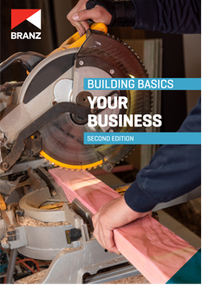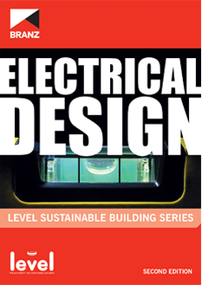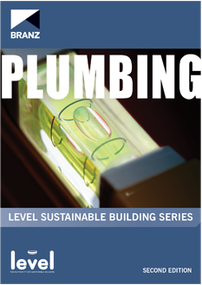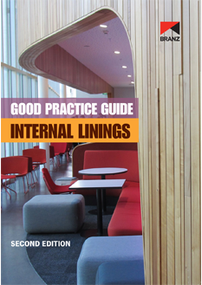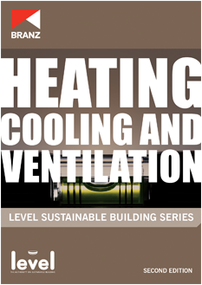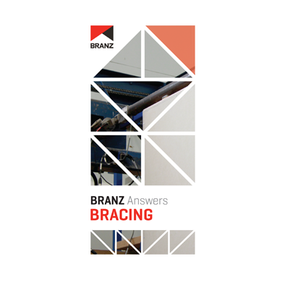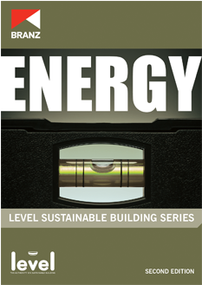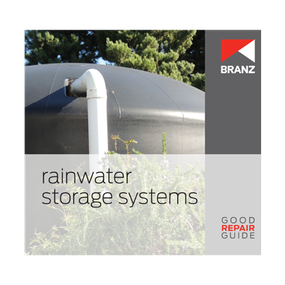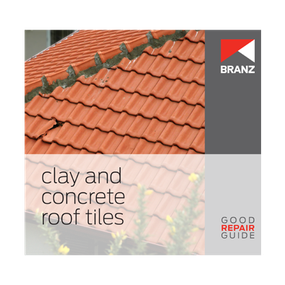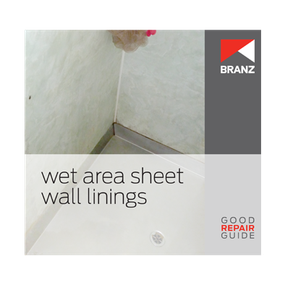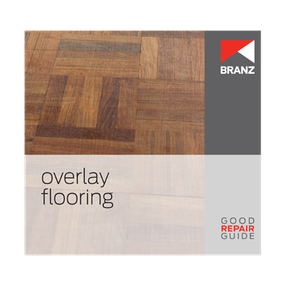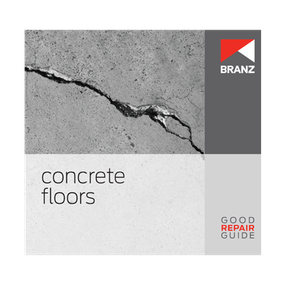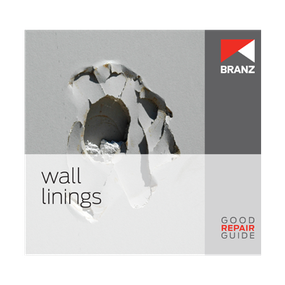Building Basics: Your business (2nd edition)
Plumbers, electricians, joiners, plasterers and other trades still have paperwork to do, but builders tend to have considerably more paperwork because they are usually the main contractor, involved from the start to the finish of a project. Running your own business is something that many builders aspire to. It's almost like a rite of passage - being an apprentice, qualifying and then going out on your own. New Zealand is full of small enterprises, and the construction industry has more than average.
So how does a builder know what to do when they make the decision to go it alone? They learn from others (and the mistakes of others), they do some things that work well and others that don't, but until now there has been no one place they can go to find out everything they need to consider before starting their own business.
This book outlines the key things a builder starting their own business needs to think about - many of which are legal requirements. For those already running a business, it is a chance to evaluate progress and get some ideas on improvements.
Disclaimer: Please note that our publications reflect the regulations and best practices on the date of release, which is shown on the publication. As regulations and industry standards evolve, we always recommend that our publications be read in conjunction with the latest building code clauses and standards.
Building Basics: Lightweight steel framing (2nd edition)
The aim of this guide is to provide easy-to-follow practical design and construction information for designers, builders and building consent authorities who are unfamiliar with lightweight steel framing, which has a growing market share in housing construction.
This guide covers:
- statutory requirements
- steel framing materials
- thermal breaks
- the fabrication process
- design and erection
- roof and wall underlays
- windows and external doors
- wall claddings
- roof claddings
- insulation
- wiring and piping installation
- internal fit-out.
Disclaimer: Please note that our publications reflect the regulations and best practices on the date of release, which is shown on the publication. As regulations and industry standards evolve, we always recommend that our publications be read in conjunction with the latest building code clauses and standards.
Building Basics: Minimising waste (2nd edition)
Construction and demolition waste is mainly solid waste and typically includes packaging from new building materials as well as wood, plasterboard, metal, concrete and rubble resulting from construction, renovation and demolition of buildings. Plant matter and unwanted soil shifted during the building process also fall into the waste category.
The key steps to follow in design and construction are to reduce, reuse, recycle and recover. This book is aimed at builders, designers, tradespeople and educators and explains with detailed guidance and case studies how these steps can be achieved.
Disclaimer: Please note that our publications reflect the regulations and best practices on the date of release, which is shown on the publication. As regulations and industry standards evolve, we always recommend that our publications be read in conjunction with the latest building code clauses and standards.
Seminar: Talking timber
This seminar travels along the path of timber as it is prepared for a career in the building industry. Starting off in the forest, we will explore the influences on the timber as it grows and how this will impact on its properties as sawn timber. Once felled, the timber starts its processing journey where it is again subject to many influences.
Once in its sawn forms, framing and wall cladding, we will then traverse the treatment options for the end use, drying, storage (during transport and on site), installation and post-installation care. For timber weatherboard claddings, we will cover the requirements for a good installation including storage and transport, defects, suitable species, treatment, applicable codes and standards, installation and fixing, as well as appropriate coatings for the treatment and finally maintenance.
Please note that access to this webstream will expire 1 month after purchase.
Level: Electrical design (2nd edition)
This popular publication gives designers and electrical contractors guidance around designing and specifying electrical and other cabling in domestic buildings. It pays particular attention to energy efficiency and homeowner comfort while reducing household running costs.
This publication covers:
- Building Code and standards requirements
- power supply system design
- internal electrical wiring
- wiring layout and installation
- low voltage systems.
Disclaimer: Please note that our publications reflect the regulations and best practices on the date of release, which is shown on the publication. As regulations and industry standards evolve, we always recommend that our publications be read in conjunction with the latest building code clauses and standards.
Level: Plumbing (2nd edition)
This publication gives guidance to designers and plumbing contractors in the key decisions and requirements around design and installation of hot and cold water supply and sanitary plumbing in a domestic building.
This publication covers:
- statutory requirements
- design of water supply systems
- materials selection
- water supply fundamentals including rainwater harvesting
- cold water supply installation
- hot water system selection and installation
- sanitary plumbing including greywater harvesting.
Note that this book was prepared before the November 2023 updates to Building Code Acceptable Solution G12/AS1.
Disclaimer: Please note that our publications reflect the regulations and best practices on the date of release, which is shown on the publication. As regulations and industry standards evolve, we always recommend that our publications be read in conjunction with the latest building code clauses and standards.
Good Practice Guide: Internal linings (2nd edition)
Specifying and fixing internal linings demands a high degree of skill to ensure that the finished installation will perform in the environment the internal linings are installed in and meet the end user's expectations. There is a wide range of internal lining materials available, and there is often a gap between what is expected of particular lining materials and what is achievable given the construction methods being used.
This guide covers most current wall and ceiling lining applications including lining selection, support systems and fixings. It sets out the requirements and installation processes for all aspects of lining installtion so that realistic finish quality levels can be set and the completed installation achieves the expected quality level. It does not cover the selection and installation of suspended ceiling systems.
The audience is designers and specifiers, builders, partition installers, lining installers, stopping contractors, building officials, building owners and students of design and construction.
Disclaimer: Please note that our publications reflect the regulations and best practices on the date of release, which is shown on the publication. As regulations and industry standards evolve, we always recommend that our publications be read in conjunction with the latest building code clauses and standards.
Level: Heating, cooling and ventilation (2nd edition)
This publication helps designers, specifiers and builders ensure that new and existing houses are warm and effectively ventilated, providing owner comfort, convenience, health and safety while minimising running costs. It acknowledges the importance of good passive design - taking advantage of free sources of energy such as sun and wind to provide heating, cooling and ventilation.
This publication covers:
- heating and cooling design considerations and methods
- thermal design
- ventilation design considerations and methods.
Disclaimer: Please note that our publications reflect the regulations and best practices on the date of release, which is shown on the publication. As regulations and industry standards evolve, we always recommend that our publications be read in conjunction with the latest building code clauses and standards.
Seminar: BRANZ Answers - Bracing
This seminar takes a back-to-basics approach to bracing taking you through the steps that need to be addressed using examples to calculate the bracing required for framed walls.
Please note that access to this recorded seminar will expire 1 month after purchase.
Seminar: BRANZ Answers 2017
This seminar aims to give you the answers to a wide range of practical questions. The topics covered range from the requirements for fencing of swimming pools to specific topics including:
- concrete slab design and construction: free joints, shrinkage control joints, floor tile movement control joints, reinforcing steel cover, edge distances, slab moisture contents, screw bolt installation
- flashings: proprietary flashings and large roof flashings
- access: level entries, stair design
- building exterior: timber finishes, timber profiles
- verandas and sunshades: uplift, fixings/connections, bracing
- corrosion: protection to structural steel, dissimilar metals
- compliance: notices to fix, certificates of acceptance, outbuilding exemptions, acoustic wall principles
- innovation: prefabrication/panellisation, CLT, LVL.
Please note that access to this recorded seminar will expire 1 month after purchase.
Seminar: BRANZ Answers - Membrane roofing
This seminar provides information on design, specification and installation of current roof membrane systems.
Please note that access to this recorded seminar will expire 1 month after purchase.
Level: Energy (2nd edition)
This guide covers important choices facing designers and homeowners in selecting active energy systems such as water heating, space heating and lighting and looks at options such as photovoltaic electricity generation. Considerations include what different technologies can achieve and which options are more energy efficient and environmentally friendly than others.
It explains the requirements of the New Zealand Building Code, standards and other obligations that need to be met while pointing out that going better than the required minimum typically brings benefits in comfort and ongoing cost savings.
Note that since the publication of this book the energy efficiency requirements in H1/AS1 and the water heating requirements in G12/AS1 have both been amended.
Disclaimer: Please note that our publications reflect the regulations and best practices on the date of release, which is shown on the publication. As regulations and industry standards evolve, we always recommend that our publications be read in conjunction with the latest building code clauses and standards.
Good Repair Guide: Rainwater storage systems
Approximately 10% of New Zealand households rely on rainwater collected from roofs for their water supply. Typically, these are rural residential properties but may include country schools, camping grounds, marae and other community buildings. A number of fairly simple and relatively inexpensive measures can be introduced to existing systems to improve water quality
This Good Repair Guide looks at upgrading options and maintenance requirements for existing rainwater storage systems to ensure a quality potable roof water collection and storage system is maintained.
Disclaimer: Please note that our publications reflect the regulations and best practices on the date of release, which is shown on the publication. As regulations and industry standards evolve, we always recommend that our publications be read in conjunction with the latest building code clauses and standards.
Good Repair Guide: Clay and concrete roof tiles
Clay and concrete tiles have long been popular choices of roofing material, particularly in severe coastal or thermal environments. As a general rule, clay and concrete tile roofs can be expected to last 50 or 60 years before needing replacement.
Regular checks and proper maintenance are critical to keep the roof in sound condition and to keep the water out. This Good Repair Guide focuses on the repair options for isolated areas of concern.
Disclaimer: Please note that our publications reflect the regulations and best practices on the date of release, which is shown on the publication. As regulations and industry standards evolve, we always recommend that our publications be read in conjunction with the latest building code clauses and standards.
Good Repair Guide: Wet area sheet wall linings
Wet area sheet wall linings may be subjected to continual wetting, such as in showers and around baths with a shower over the bath, and splashing, such as the wall area immediately around the rim of a bath, outside an enclosed shower with a shower curtain only or behind basins, laundry tubs and sinks.
This Good Repair Guide looks at the options for repairing wet area sheet linings (factory-finished hardboard or fibre-cement panels, painted oil-tempered hardboard sheet and acrylic sheeting) and how to replace them if they cannot be repaired.
Disclaimer: Please note that our publications reflect the regulations and best practices on the date of release, which is shown on the publication. As regulations and industry standards evolve, we always recommend that our publications be read in conjunction with the latest building code clauses and standards.
Good Repair Guide: Leaking basement walls
Residential basements are common in houses built on sloping ground and can be valuable and useful spaces if they are dry and warm. In many cases, the use of a basement changes over time as household size, lifestyle and interests change.
Work may be required to upgrade the space. High internal humidity, musty odours and efflorescence in below-grade basements are all signs that moisture may be entering the space through porous concrete retaining walls.
This Good Practice Guide covers only basement walls of residential buildings on sloping sites that are no more than one storey in height below natural ground and not subject to hydrostatic pressure. Where a wall is subject to hydrostatic pressure from groundwater or a spring, seek specific design advice from a specialist damp-proofing company.
Disclaimer: Please note that our publications reflect the regulations and best practices on the date of release, which is shown on the publication. As regulations and industry standards evolve, we always recommend that our publications be read in conjunction with the latest building code clauses and standards.
Good Repair Guide: Overlay flooring
Overlay flooring is a flooring system that is laid over timber tongue and groove (T&G) boards, particleboard, plywood or concrete. It includes solid timber boards, parquet flooring, timber composite flooring systems and bamboo flooring
This Good Repair Guide describes the repair options for existing overlay flooring. It describes how to:
- repair minor damage
- replace a section of floor
- replace an entire floor
- prepare an overlay floor for a new protective finish.
Floor coverings such as cork tiles, vinyl tiles or sheet vinyl are not covered by this guide.
Disclaimer: Please note that our publications reflect the regulations and best practices on the date of release, which is shown on the publication. As regulations and industry standards evolve, we always recommend that our publications be read in conjunction with the latest building code clauses and standards.
Good Repair Guide: Concrete floors
Although the many atttibutes of concrete such as compressive strength, excellent durability and versatility are well known, concrete floors are not completely immune from problems. This Good Repair Guide focuses on the restoration of the appearance of concrete floors.
Inconsistency of the original concrete mix, poor surface finishing and inadequate curing may result in a floor finish that is less than acceptable. Shrinkage cracking, staining, surface pitting and wear from vehicle or foot traffic can also be a problem.
Disclaimer: Please note that our publications reflect the regulations and best practices on the date of release, which is shown on the publication. As regulations and industry standards evolve, we always recommend that our publications be read in conjunction with the latest building code clauses and standards.
Good Repair Guide: Hinges
Hinges for timber doors and windows are frequently overlooked hardware items. It is not until they fail to operate properly that attention is paid to them. By the time this occurs, they are sometimes beyond refurbishment, and replacement is the only option. If problems are addressed before they become too serious, hinges can generally be refurbished and restored.
This Good Repair Guide looks at the types of hinges used with timber doors and windows, the problems that can occur and how they can be refurbished and, if necessary, replaced.
Disclaimer: Please note that our publications reflect the regulations and best practices on the date of release, which is shown on the publication. As regulations and industry standards evolve, we always recommend that our publications be read in conjunction with the latest building code clauses and standards.
Good Repair Guide: Wall linings
General wear and tear in a house often results in damage to interior wall linings. Damage can range from repairable (a picture hook pulled out or a door handle through the wall) to the catastrophic (a major leak or structural failure).
This Good Repair Guide outlines some options for repairing existing wall linings and guidelines for when to replace a sheet or larger area of lining.
Prefinished linings (such as melamine-faced boards) are not included in this guide.
Disclaimer: Please note that our publications reflect the regulations and best practices on the date of release, which is shown on the publication. As regulations and industry standards evolve, we always recommend that our publications be read in conjunction with the latest building code clauses and standards.




